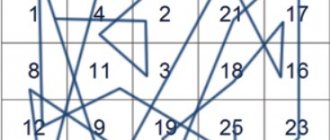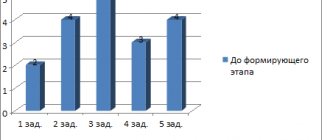Your child has just recently mastered writing and reading. It was not easy, but he still managed to cope with these difficult tasks. And suddenly his notebooks were full of notes from the teacher and terrible, bold “twos”, and he read somehow strangely: he skipped letters, rearranged syllables, etc.
A teacher at school and you think that the child is inattentive because he makes “ridiculous”, “stupid”, from your point of view, mistakes; that he is lazy and doesn’t try at all, so at school he is scolded in front of the whole class, and at home he is punished. The child sits for a long time on homework in the Russian language, rewrites the same things many times, crams the rules, but still there is no result.
Let's figure it out - is it the child's fault or his misfortune? Most likely, your child has reading and writing disorders (dyslexia and dysgraphia) , and perhaps even dysorthography (a specific inability of students to learn spelling rules). Unfortunately, you will not be able to fix the problem on your own; only a qualified speech therapist can help in this situation. If you do not deal with this problem, then failure at school, misunderstanding on the part of parents and teachers, a situation of failure - all this will lead to the child feeling constant fatigue and being in a state of chronic stress. He may have an internal protest against any school assignments, a refusal not only to do homework, but also to go to school in general.
Dyslexia. Reading errors.
It is associated with underdevelopment of the functions of the phonemic system, i.e. system of phonemes of a language, in which each unit is characterized by a certain set of semantic features. In the Russian language, these signs are hardness or softness, voicedness or dullness, method of formation, place of formation, participation of the palatine velum. Each phoneme differs from every other either by one semantic distinguishing feature or by several. In cases where phonemes differ from one another in several semantic distinctive features, they speak of distant sounds that are not similar to each other. For example, the sounds K
and
Z
differ in a number of characteristics: the method, place of formation, participation of the vocal folds.
If phonemes differ in one feature, then they are close, oppositional. For example, the sounds S
and
Z
differ in one feature (s - voiceless, z - voiced). The language distinguishes entire groups of oppositional phonemes (hard and soft, voiced and voiceless, etc.).
In words, one can conditionally distinguish a combination of phonemes following each other in a certain sequence, which is associated with semantics and meaning. Changing one of the phonemes in the word ( braids - goats
) or a change in the sequence (
linden - saw
) leads to a change in meaning or its destruction.
The following functions of the phonemic system are distinguished:
semantic function
(a change in one phoneme leads to a change in meaning)
auditory-pronunciation differentiation of phonemes
(phonemic perception: each phoneme is different from every other phoneme acoustically and articulatory)
phonemic analysis
(decomposition of a word into its constituent phonemes)
In the process of developing oral speech in children, reliance on semantics is one of the main conditions for the development of speech function.
In some cases, children may have underdeveloped functions of phonemic perception, analysis and synthesis.
Taking into account the immaturity of the basic functions of the phonemic system, phonemic dyslexia can be divided into two forms.
The first form is a reading disorder associated with underdevelopment of phonemic perception (phoneme differentiation), which manifests itself in difficulties in learning letters, as well as in the substitution of sounds that are acoustically and articulatory similar.
The second form is a reading disorder caused by underdevelopment of the phonemic analysis function.
Distortions of the sound-syllable structure of a word are manifested in the omission of consonants during confluence (mark - “mara”); in insertions of vowels between consonants when they come together (pasla - “pasala”); in permutations of sounds (duck - “tuka”); in omissions and insertions of sounds in the absence of a combination of consonants in a word; in omissions, permutations of syllables (shovel - “lata”, “lotapa”).
FEATURES OF READING DISORDERS IN PRIMARY SCHOOL AGE CHILDREN WITH ODD
Currently, there has been a significant increase in the number of children with various learning difficulties in primary school. Difficulties in mastering certain school subjects are the most common reason for a sharp decline in educational motivation in children. That is why the problem of reading impairment in schoolchildren is one of the most pressing, since reading is the foundation and means of a child’s further education at school. The main task of a speech therapist is to promptly identify reading disorders and determine methods and principles for their correction.
The term “general speech underdevelopment” was first introduced by Rosa Evgenievna Levina in the 50-60s of the twentieth century. She defined general speech underdevelopment as a complex speech disorder in which the formation of all components of the speech system (phonetic, lexical, grammatical) is impaired with intact hearing and intelligence.
Children with general speech underdevelopment have typical features indicating a systemic disorder of speech activity (Nikashina N.A., Kashe G.A., Spirova L.F., Zharenkova G.I.). One of the leading signs is the later onset of speech; the first words appear by 3-4, and sometimes by 5 years. Agrammatisms are observed in speech, that is, errors in the construction of sentences and their perception. In children with general speech underdevelopment, there is a lack of correct phonetic design; the speech of such children is understandable only to those close to them. Expressive speech lags behind impressive speech with relatively good understanding of addressed speech. There is also low speech activity, which decreases with age without special training.
Inadequate speech activity also affects the reading process. Many scientists have studied reading impairment, including Luria A.R., Lalaeva R.I., Levina R.E., Tkachev R.A., Mnukhina S.S., Becker R., Khvattsev M.E.
In Russian speech therapy, reading disorders are usually called dyslexia. There are different definitions of this concept. For example, Khvattsev M.E. defines dyslexia as a partial disorder of the reading process, difficulty mastering the skill of reading and leading to many errors during it, these are all kinds of omissions of letters, syllables, words, as well as substitutions, rearrangements and substitutions of words [1].
Volkova L.S., pointed out that dyslexia is a partial specific disorder of the reading process, caused by the immaturity of higher mental functions and manifested in repeated errors of a persistent nature [3].
The World Federation of Neuroscience defines dyslexia as follows. Dyslexia is a disorder that presents difficulties in mastering reading, despite normal learning and intact intelligence, as well as good socio-cultural conditions for the child’s development at school and family [2].
A feature of dyslexic errors is their typical, repetitive nature. Reading difficulties manifest themselves in repeated letter substitutions, rearrangements, omissions, etc. Even a good reader can have reading errors due to fatigue, distractibility, etc. But these errors will not be typical, but will be random. The second feature of reading errors in dyslexia is their persistent nature. Many normal children who begin to learn to read make mistakes, but they do not observe them for long and disappear rather quickly. In children suffering from dyslexia, these errors persist for a long time, months and even years.
Thus, it is advisable to define dyslexia as follows: dyslexia is a partial disorder of the process of mastering reading, manifested in numerous repeated errors of a persistent nature, due to the immaturity of the mental functions involved in the process of mastering reading.
According to various authors, the prevalence of reading impairment among children with normal intelligence is quite high. In European countries, there are up to 10% of children with dyslexia. According to Z. Matejcek – 2-4%, according to E. Hallgren – up to 10%, according to A.N. Kornev. – 4-8%. Benker R., in the course of his research, found that reading disorders are observed in 3% of children in primary classes of a mass school, and in a speech school the number of children with dyslexia reaches 22% [1].
Having analyzed all the scientific literature (Ananyev B.G., Kashe G.A., Lalaeva R.I., Kudryavtseva M.Z.) on this issue, we identified the features of reading disorders in primary schoolchildren with general speech underdevelopment.
Children with speech underdevelopment, instead of smooth syllabic reading, often use letter-by-letter guessing reading, which is why a large number of a wide variety of errors are observed. Most often, children with general speech underdevelopment pronounce a meaningless set of sounds, which is why the word loses its meaning. For example, “kunika” means strawberry; “pobistro” – run away quickly; "canton" - with a whip. There is also a large number of substitutions of sounds that are similar in letter composition, but differ in meaning. For example, “corner” is a coal, “potato” is a card. Along with letters, entire syllables are replaced. So, instead of birch - “pelesa”, squirrel - “beloska”. Also, younger schoolchildren with speech underdevelopment are characterized by repeated repetitions of sounds, syllables, and words in the process of reading, which is why the rate of speech is slow.
Children with general speech underdevelopment often continue to have a non-contextual perception of a phrase - children perceive isolated words when reading and, moreover, as equivalent. They do not take into account the lexico-grammatical connections of words, and if they do, they do not always have sufficient speech preparation for their perception. Younger schoolchildren often cannot group words according to the principle of lexical and grammatical compatibility, since these children do not have sufficient speech support.
An insufficiently complete understanding of the meaning of a sentence leads the child to abrupt reading with characteristic pauses between words. A pause is often made after reading each word. The child is completely indifferent into which parts the sentences are divided into using pauses. Reading sentences or text follows the principle of joining words to each other [2].
The poverty of practical morphological generalizations in children contributes to the replacement of suffixes, endings, and prefixes. The vocabulary of children with speech underdevelopment is very limited. Children do not know many words and, accordingly, do not understand their meaning. Sometimes a word is understood only in a specific life situation, and not in another context. When reading, a word acquires a new semantic connotation, it appears as unfamiliar, and therefore causes difficulties for children. Also, metaphors, idiomatic expressions, and comparisons are not available to younger schoolchildren with general speech underdevelopment.
Thus, we can conclude that the following groups of errors are observed in dyslexia:
1. Replacement and mixing of sounds when reading, most often phonetically similar sounds (voiced and unvoiced, affricates and sounds included in their composition, etc.), as well as replacement of graphically similar letters.
2. Letter by letter reading.
H. Distortions of the sound-syllable structure of a word.
4. Reading comprehension problems.
5. Agrammatisms when reading.
Bibliography
1. Lalaeva R.I. Reading disorders and ways of their correction in primary schoolchildren. – St. Petersburg, 1998.
2. Levina R.I. Speech and writing disorders in children: selected. works. – M., 2005.
3. Speech therapy: Textbook for students. defktol. fak. ped. higher textbook institutions / Ed. L.S. Volkova. – M., 2004.
Symptoms of dyslexia
Like other diseases, dyslexia has a number of characteristic signs, in the presence of which parents should pay special attention and begin to correct the existing disorder.
Be careful if:
- When reading, the child squints slightly, blinks frequently, and rubs his eyes;
- When reading, he brings the text too close to his eyes, closes one eye or turns his head so that one eye does not participate in reading;
- While reading, skips words or even paragraphs;
- While reading or after it, he complains of severe headache and fatigue;
- When writing, lines and words overlap each other, illegible handwriting, often writes words “back to front”;
- Confuses basic geometric shapes - does not remember them, does not identify them.
However, please note that these phenomena may be signs of decreased vision in the baby. Therefore, before contacting a specialist to correct dyslexia, it is necessary to undergo an ophthalmological examination and confirm the absence of vision problems.
Manifestations of writing and reading impairments
All errors that can be attributed to dysgraphia and dyslexia are specific, stereotypical and persistent. Parents and teachers should be alert to the following child mistakes:
Reading errors
A child with dyslexia's reading may be described as slow, halting, and incorrect. If you examine a child’s reading, you can reveal the following:
- insertion of additional sounds into words;
- omission of individual letters and syllables;
- replacing one word with another;
- rearrangement of letters, syllables;
- repetition of words;
- adding words;
- skipping words.
Errors in writing
- a child who has problems with sound pronunciation writes the way he pronounces it. For example, “sapka” (hat);
- When writing, a child confuses letters corresponding to phonetically similar sounds (for example, B-P; V-F; S-SH; Z-ZH; CH-SH; CH-T; R-L, Y-L; O-U, E -Yu, etc.). He writes “tublo” instead of “duplo”, “loves” instead of “loves”. May incorrectly indicate the softness of consonants in writing: “pismo”, “lubit”, “hurt”, etc.;
- the child skips letters and syllables, for example, “kandashi” (pencils), “snk” (sledge);
- rearranges letters and (or) syllables, for example, “dovr” (yard);
- does not complete words, for example, “kuznechi” (grasshoppers);
- inserts extra letters in a word, for example, “Noyabar” (November);
- writes prepositions together, separately - prefixes (“on the table”, “on stepped”), etc.;
- writes ungrammatically, i.e. as if contrary to the rules of grammar (“beautiful bag”, “happy day”). This type of dysgraphia usually appears from the 3rd grade, when a student who already knows how to write begins to master grammatical rules. And here it suddenly becomes clear that he cannot master the rules of changing words according to cases, numbers, gender;
- does not catch subtle differences between letters, and this leads to difficulties in learning how to write letters and to incorrect representation of them in writing. For example, mixing the letters s-e, o-s, u-d-z, l-i, m-sh, v-d or the letters o-a. b-d, i-y, p-t, l-m, x-f, n-y, i-sh, l-i, a-d.
With dysorthography , a child does not have a “sense” for spelling; he can make from 15 to 60 mistakes on one page. He cannot understand where exactly the rule he knows well needs to be applied; he cannot recognize an error, much less correct it. In other words, he knows the rules, but cannot apply them. Detecting spelling patterns and solving a spelling problem requires mastery of morphological analysis of words, sufficient vocabulary, and the ability to select the necessary test words based on formal grammatical features. Difficulties in mastering spelling skills are noted not only in the initial period of education, but also in middle and high school. The most common are errors on the rules that are studied in elementary school. Children with dysorthography especially need speech therapy help. Without it, they often find themselves among the underachievers in all subjects.
Causes of dyslexia
Numerous studies have established that one of the causes of dyslexia is congenital lesions of the central nervous system, including disturbances of activity and attention (hyperactive children), as well as MMD (Minimal Brain Dysfunction).
The next reason is mental retardation (mental retardation).
A very important causal factor is disturbances in the occipital lobe (responsible for organizing complex processes of visual perception) and parietal lobe (responsible for organizing purposeful movements).
Another reason is General underdevelopment of speech (Motor alalia).
And finally, congenital brain pathology. But with it there is a nonspecific reading disorder.







